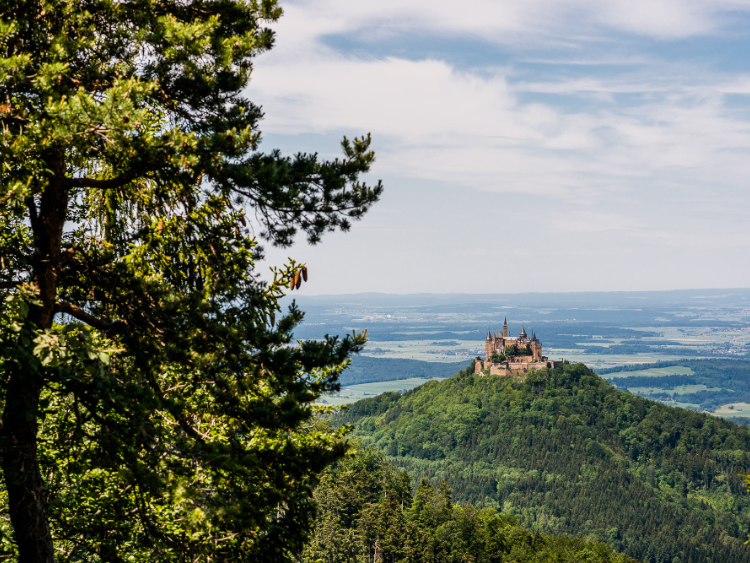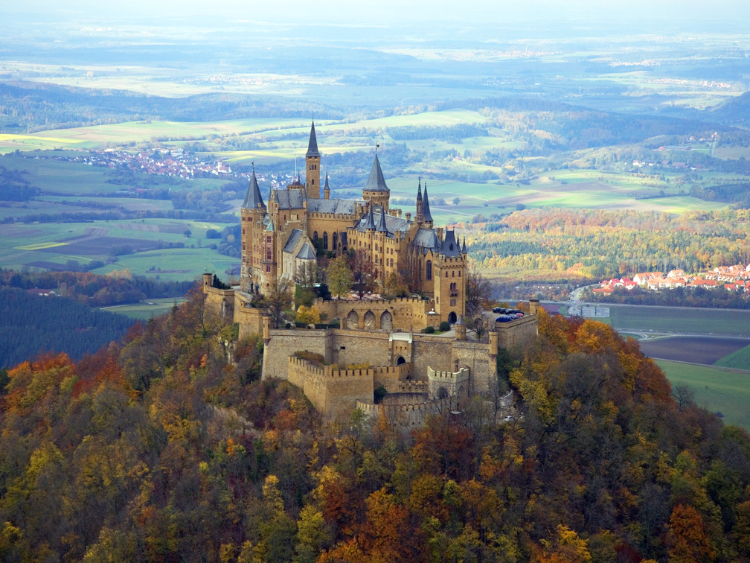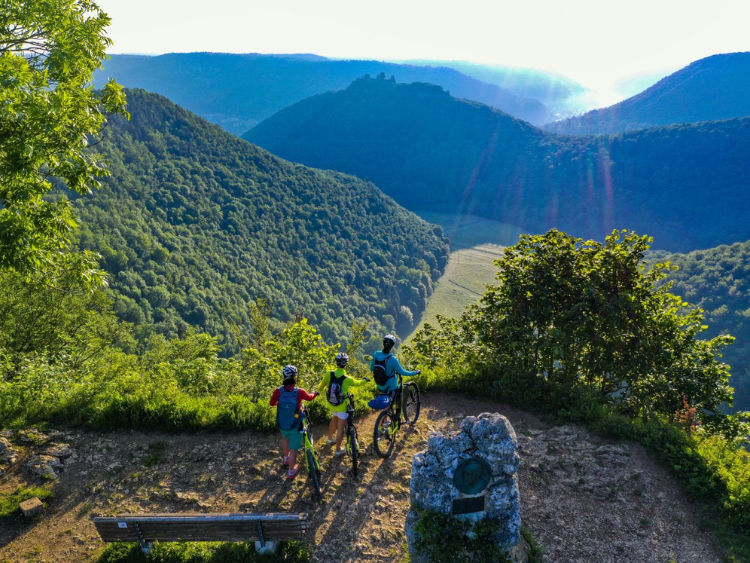
The Swabian Alb (Schwäbische Alb) is a low mountain range in the state of Baden-Württemberg, Germany. It stretches from southwest to northeast, roughly between the cities of Stuttgart and Ulm. It's known for its scenic landscapes, including forests, caves, and limestone cliffs, making it a popular destination for outdoor activities such as hiking and rock climbing.

The Swabian Alb has a rich geological history. It formed during the Jurassic and Cretaceous periods, roughly 200 to 100 million years ago. During this time, the area was covered by a shallow sea, and layers of sediment accumulated on the ocean floor.Over millions of years, these sediments were compressed and hardened into limestone and other sedimentary rocks.
The distinctive landscape of the Swabian Alb as we see it today began to take shape during the Alpine orogeny, a period of mountain-building that occurred around 65 million years ago. The shifting tectonic plates pushed up the landmass, creating the elevated plateau and the characteristic cliffs and valleys that define the region.
Throughout its history, the Swabian Alb has been shaped by various geological processes, including erosion by wind, water, and ice. The result is a diverse landscape featuring rugged limestone formations, deep valleys, caves, and karst springs. This unique environment has also played a significant role in shaping human history, as evidenced by archaeological sites such as the caves where some of the oldest figurative art in the world has been discovered.

The Swabian Alb was not "invented" by any individual or group; rather, it is a natural geographical feature that has been shaped by geological processes over millions of years. Its formation is a result of tectonic movements, sedimentation, erosion, and other natural forces acting over vast spans of time. So, it doesn't have a single inventor or creator in the way that a human-made invention would.


The term "Swabian" (Schwäbische in German) refers to the historical region of Swabia (Schwaben), which encompasses parts of present-day southwestern Germany, including portions of the states of Baden-Württemberg and Bavaria. The term "Alb" comes from the Latin word "albus," meaning white, and it refers to the characteristic white limestone rock formations found in the region.
Therefore, the name "Swabian Alb" (Schwäbische Alb) simply denotes the limestone plateau located in the historical region of Swabia. It's named as such because it's a prominent geological feature within the Swabian region and because of the distinctive white limestone rock formations that dominate its landscape.





The Swabian Alb is popular among hiking enthusiasts for several reasons:
1. **Scenic Trails:** The region offers a variety of well-maintained hiking trails that wind through diverse landscapes, including forests, meadows, valleys, and rocky cliffs. Hikers can enjoy stunning views of the surrounding countryside and picturesque villages along the way.
2. **Geological Diversity:** The Swabian Alb's limestone formations create unique geological features such as caves, sinkholes, and karst springs, adding interest and variety to hiking routes. Exploring these formations can be both educational and exciting for hikers.
3. **Cultural Heritage:** The Swabian Alb is rich in cultural history, with numerous castles, ruins, and historic sites scattered throughout the region. Hiking trails often pass by these landmarks, allowing hikers to combine outdoor adventure with cultural exploration.
4. **Accessibility:** Many of the hiking trails on the Swabian Alb are well-marked and accessible to hikers of all skill levels. Whether you're a beginner looking for an easy stroll or an experienced trekker seeking a more challenging hike, there are options available to suit every preference.
5. **Wildlife Viewing:** The Swabian Alb is home to a diverse array of plant and animal species, including rare and endangered species. Hiking through its natural habitats provides opportunities for wildlife spotting and birdwatching, adding an extra dimension of enjoyment for nature enthusiasts.
Overall, the Swabian Alb offers a rewarding hiking experience with its combination of natural beauty, cultural heritage, and accessibility, making it a beloved destination for hiking lovers.






The Swabian Alb is a fantastic hiking destination year-round, with each season offering its own unique charm:
1. **Spring:** Springtime brings blooming wildflowers, lush greenery, and mild temperatures, making it an ideal time for hiking. The weather is typically pleasant, and the trails are less crowded compared to peak summer months.
2. **Summer:** Summer on the Swabian Alb offers long daylight hours, warm temperatures, and plenty of opportunities for outdoor adventures. Hikers can enjoy exploring the trails, cooling off in natural springs or rivers, and soaking up the sunshine.
3. **Autumn:** Fall brings stunning foliage as the leaves change color, creating a picturesque backdrop for hiking. The crisp air and cooler temperatures make for comfortable hiking conditions, and the trails are often quieter as the tourist season winds down.
4. **Winter:** While winter hiking on the Swabian Alb requires more preparation and appropriate gear due to snow and icy conditions, it can be a magical experience. The landscape transforms into a winter wonderland, and hikers can enjoy peaceful trails and beautiful snowy vistas.
Regardless of the season, hikers should always check weather forecasts and trail conditions before setting out, and ensure they have appropriate clothing, footwear, and equipment for the conditions they may encounter. With its diverse landscapes and natural beauty, the Swabian Alb offers hiking opportunities for every season.